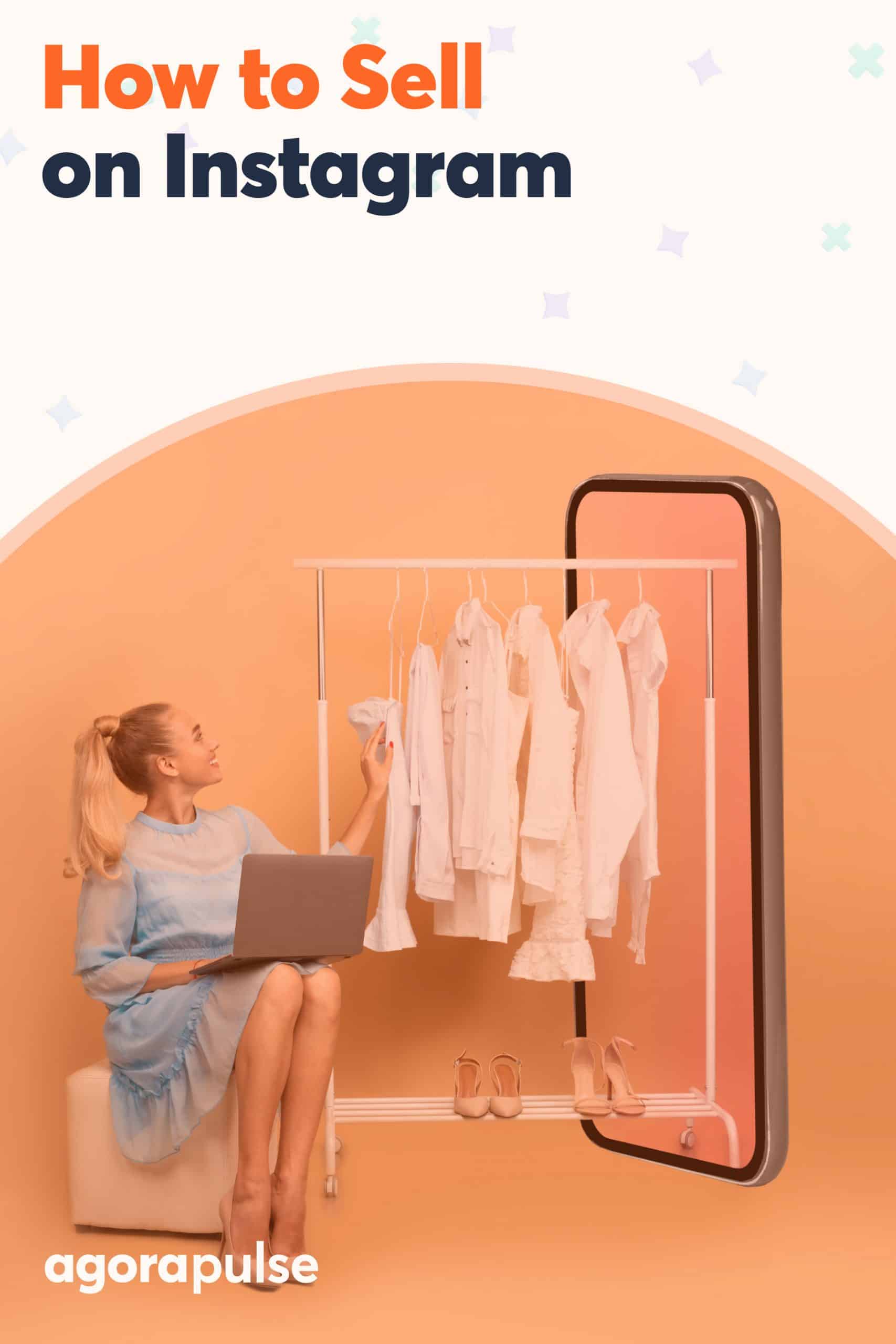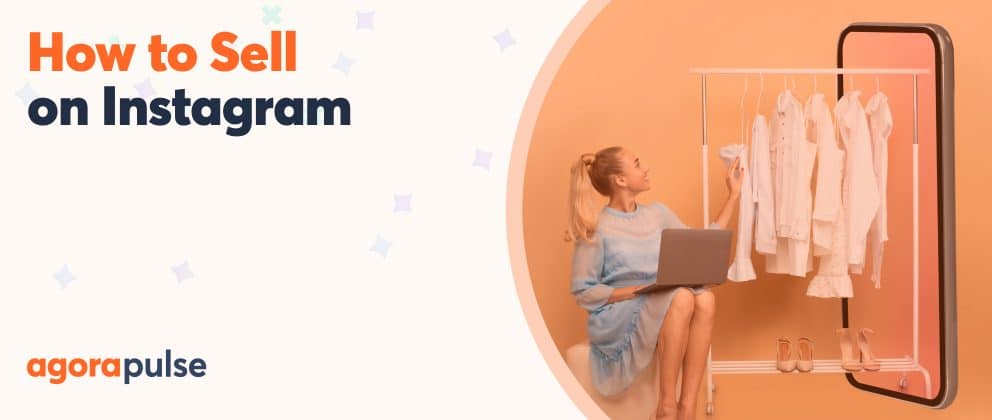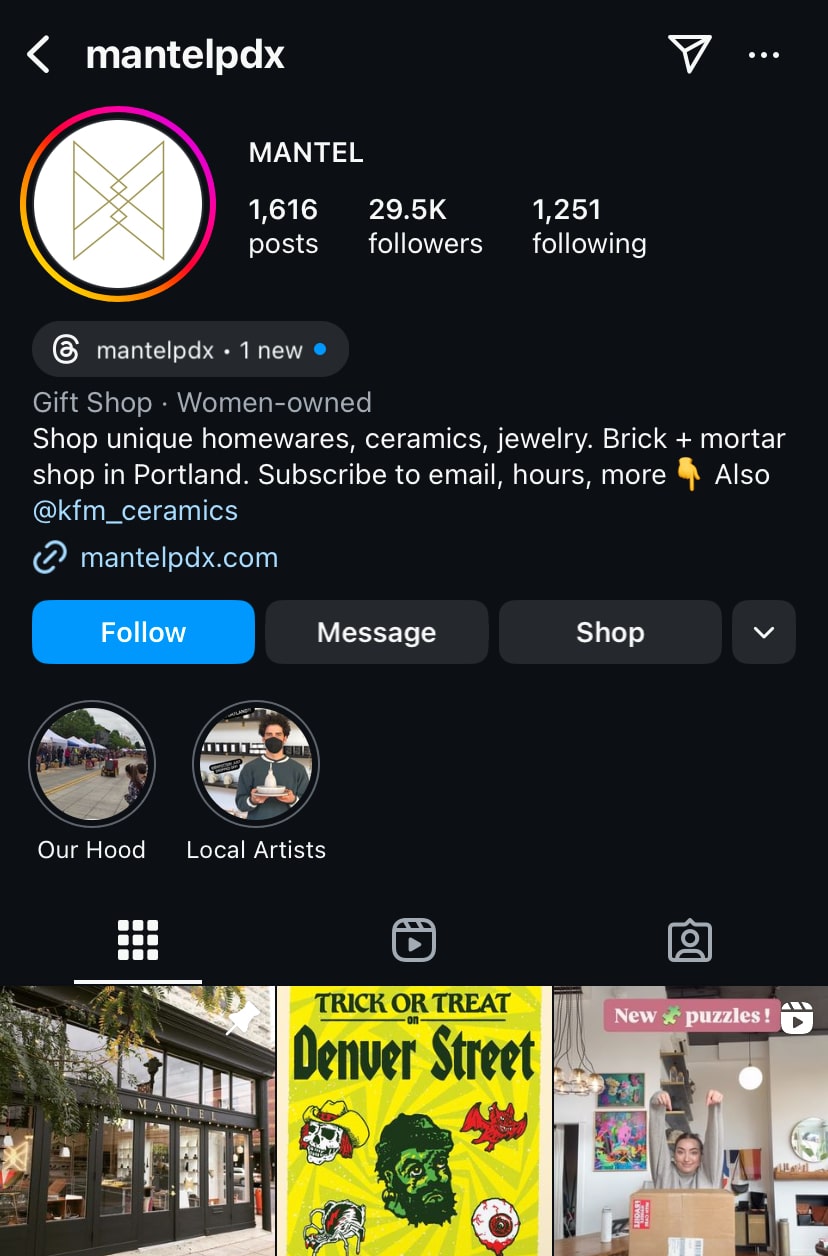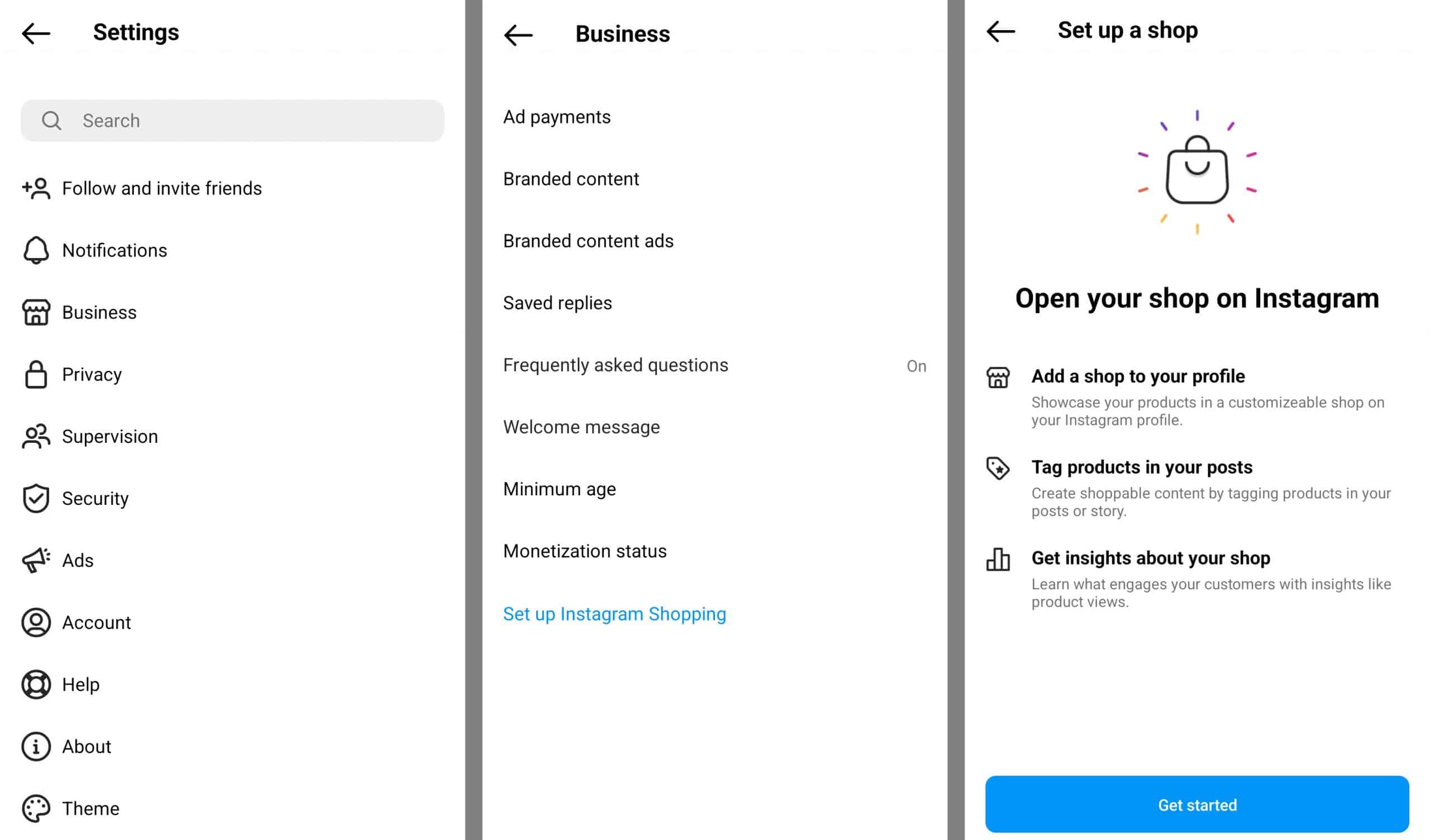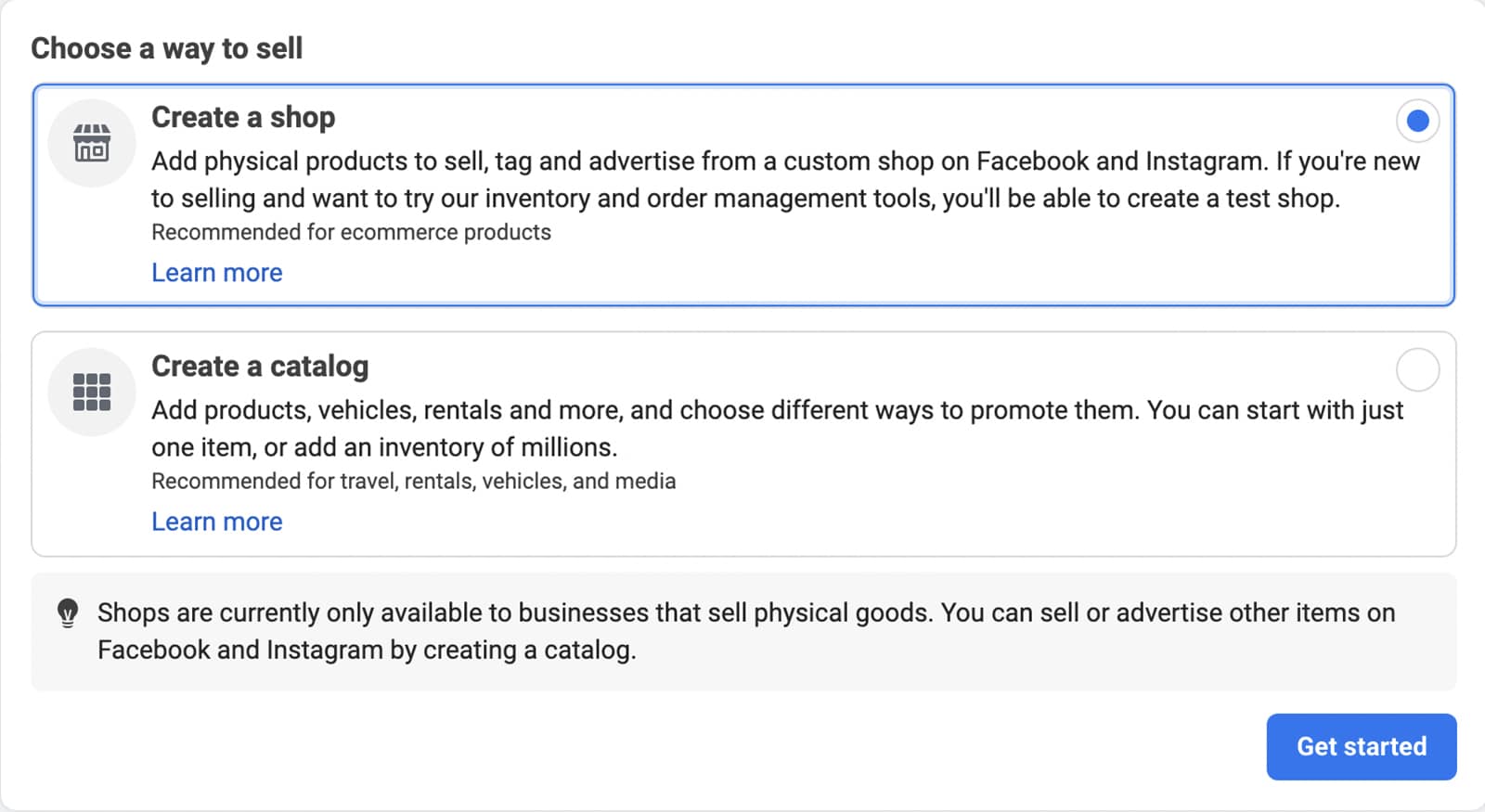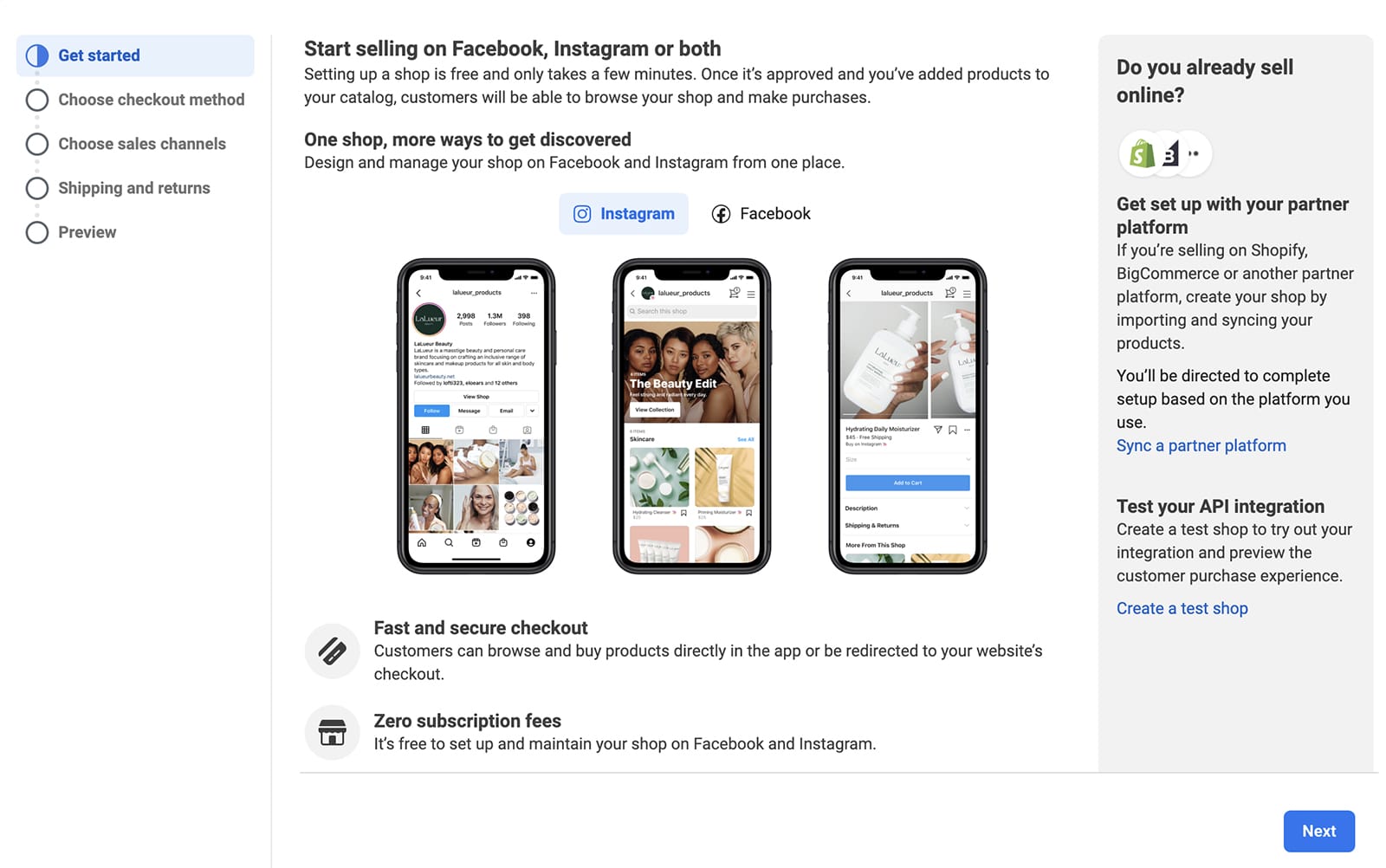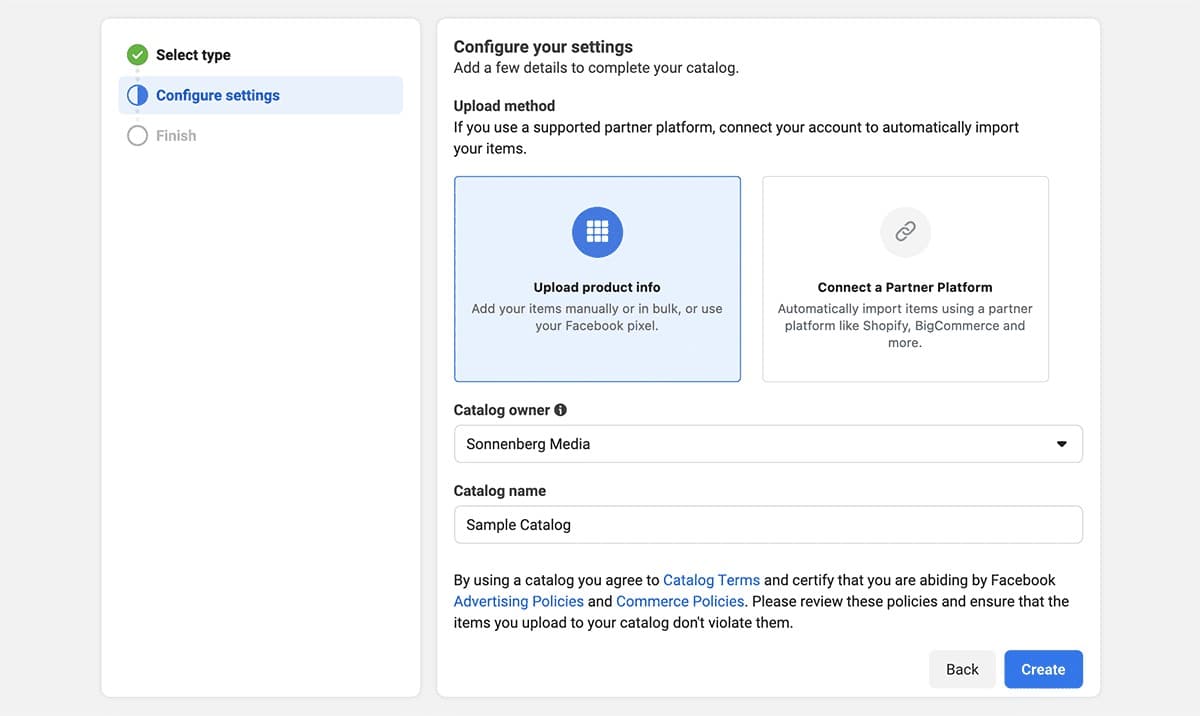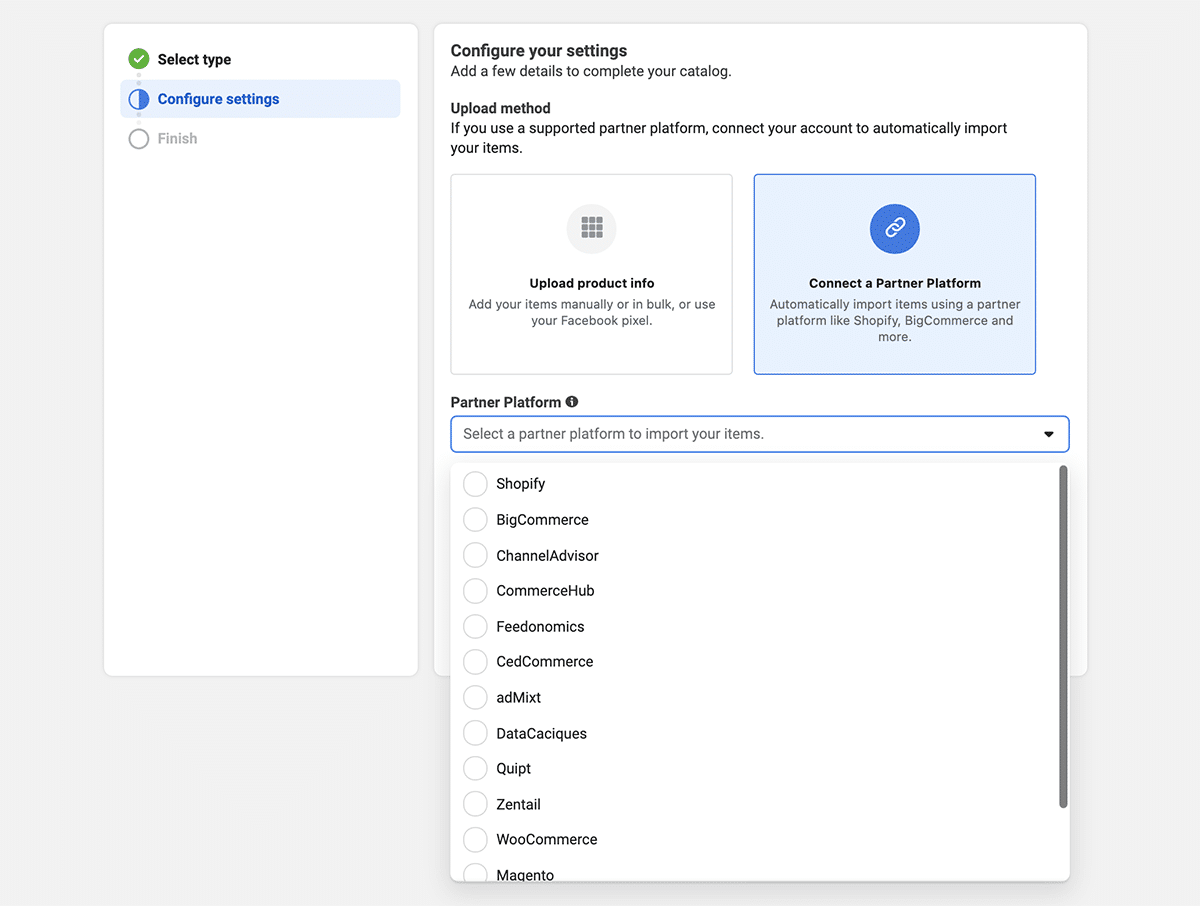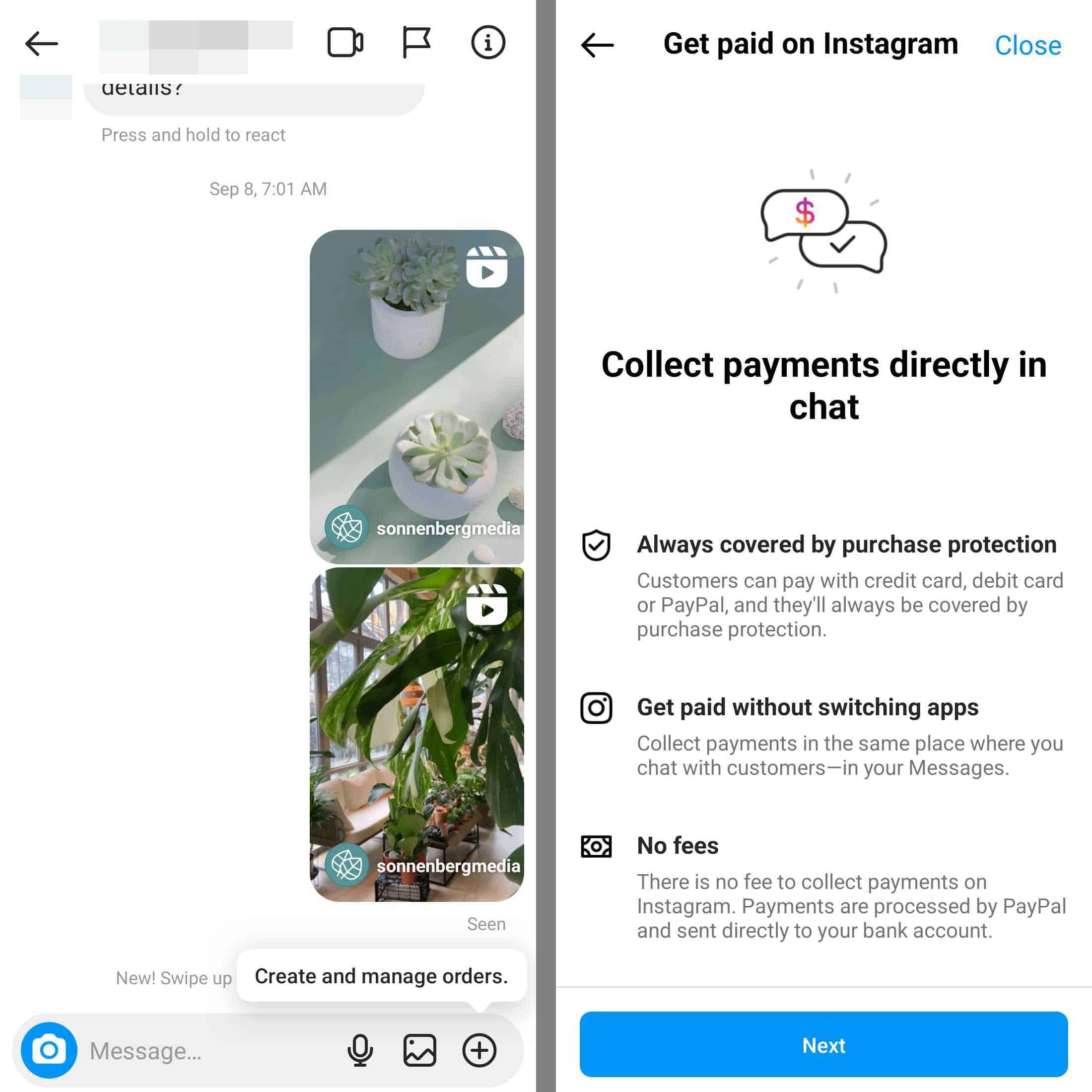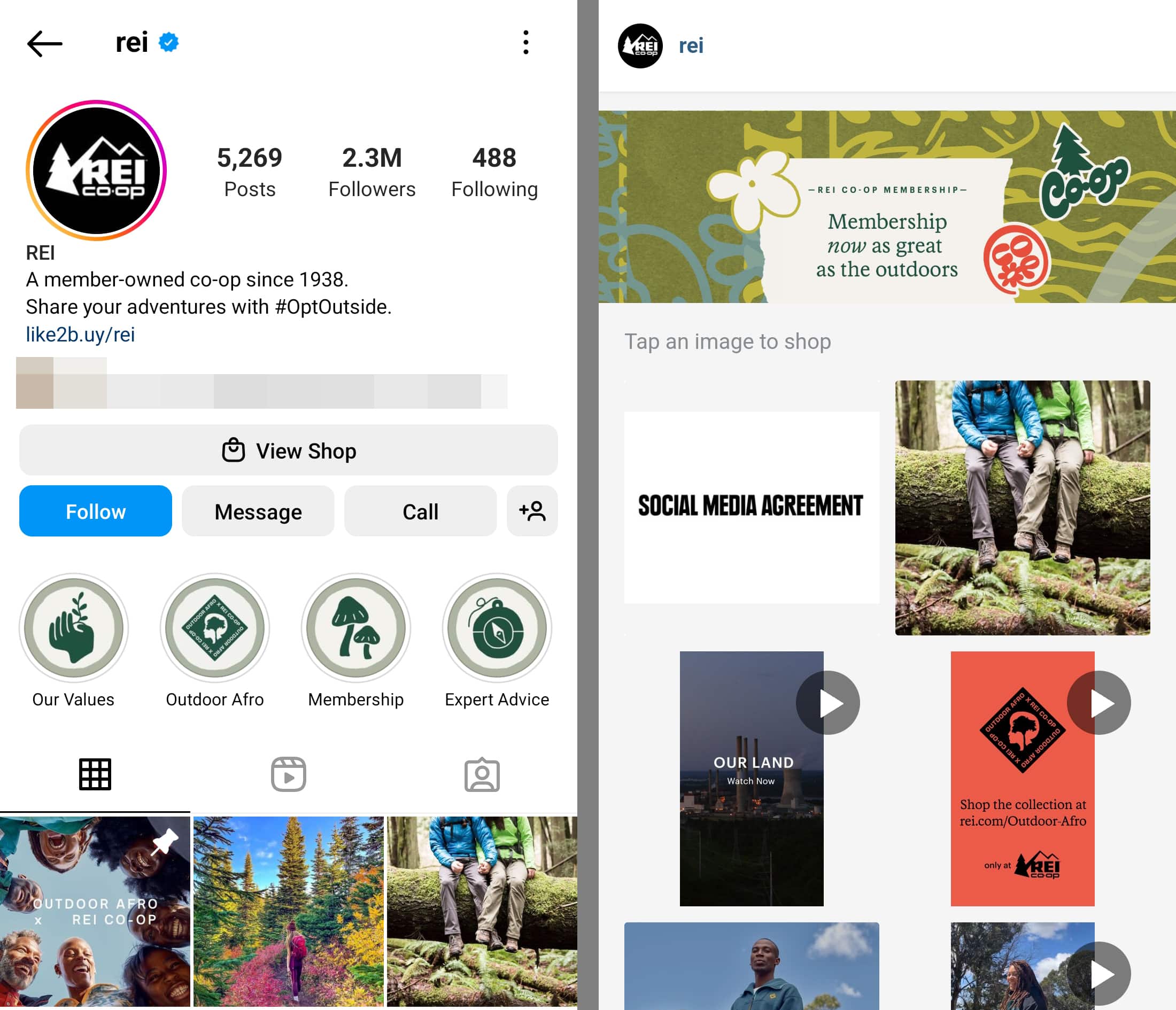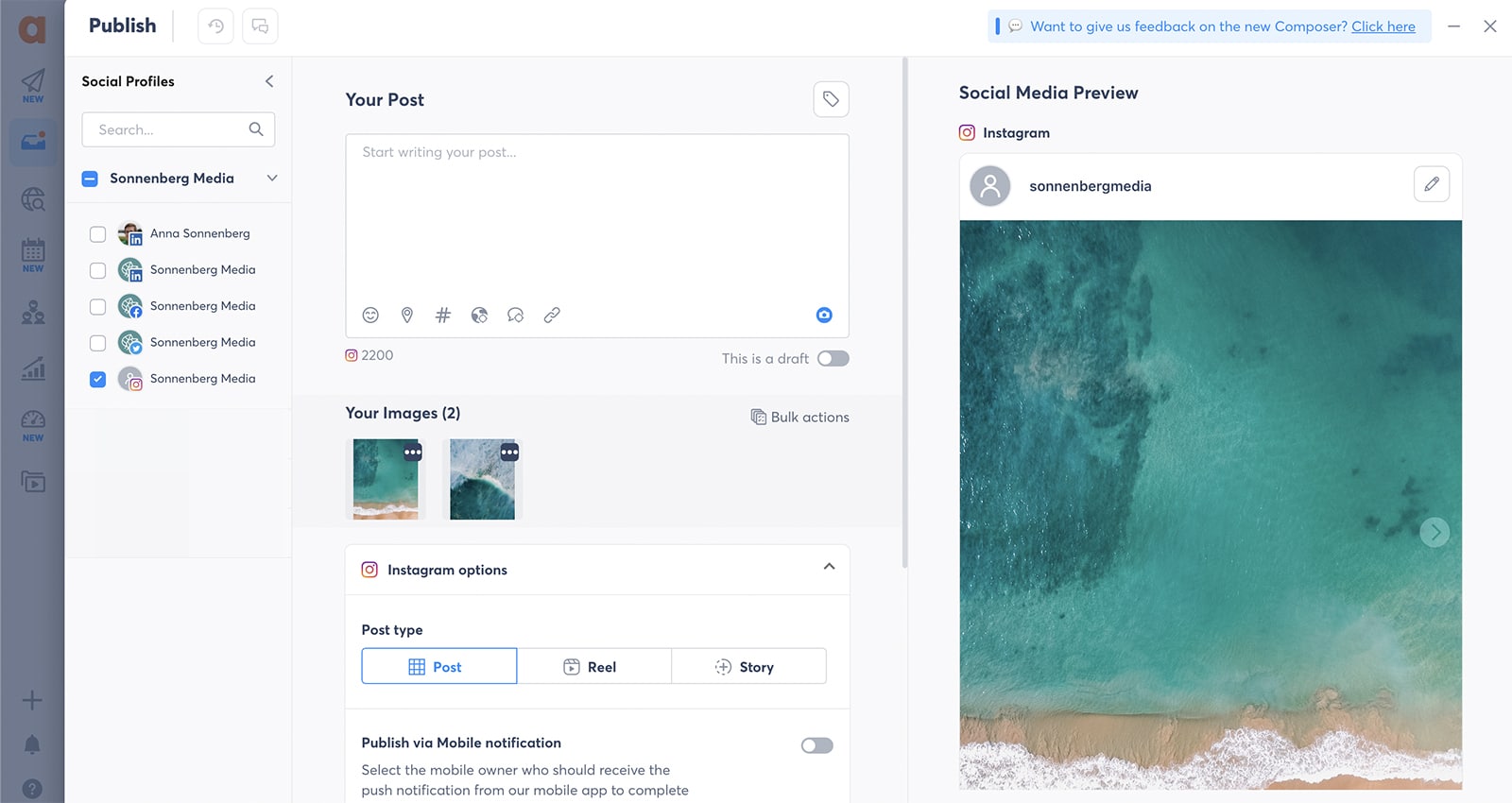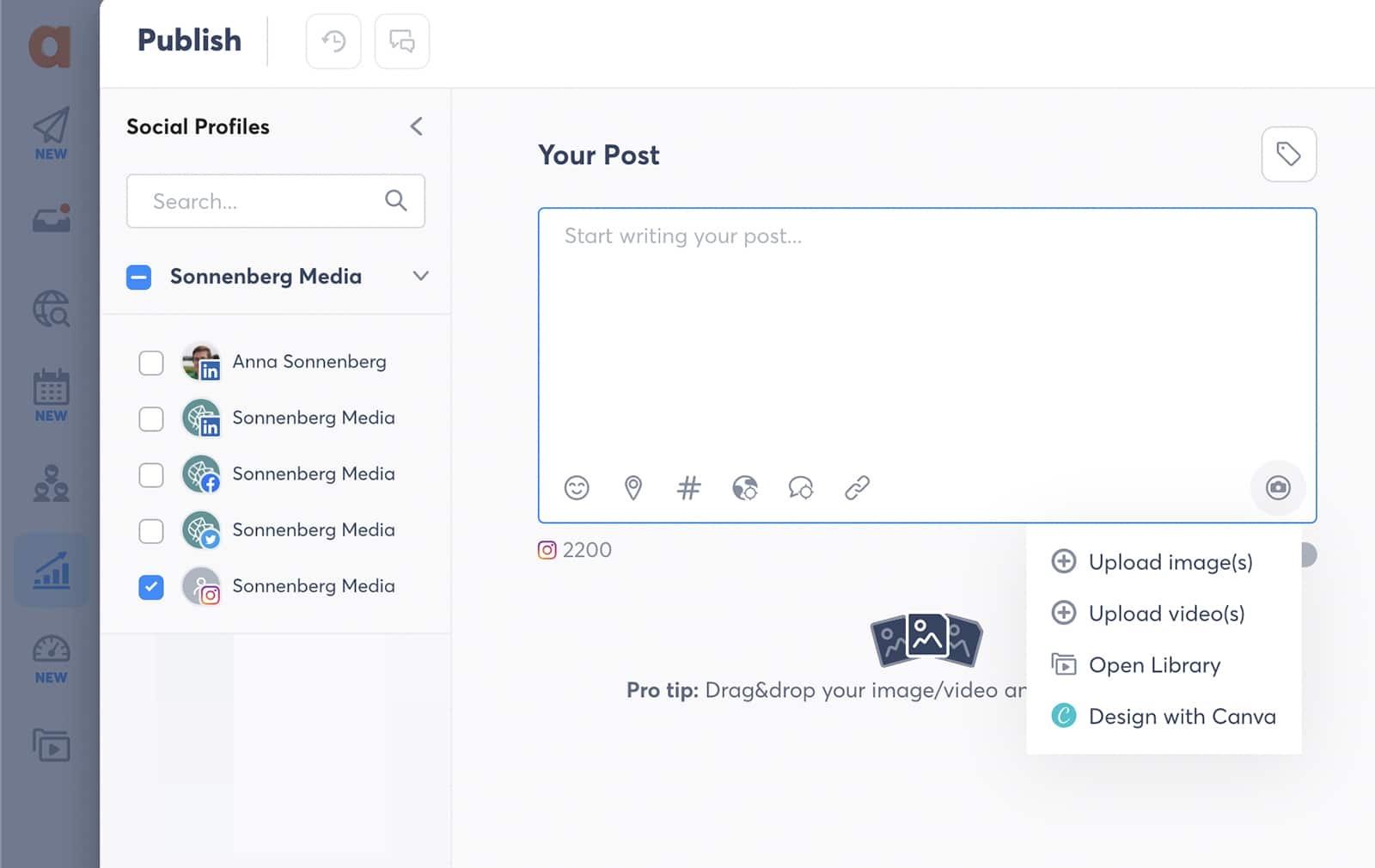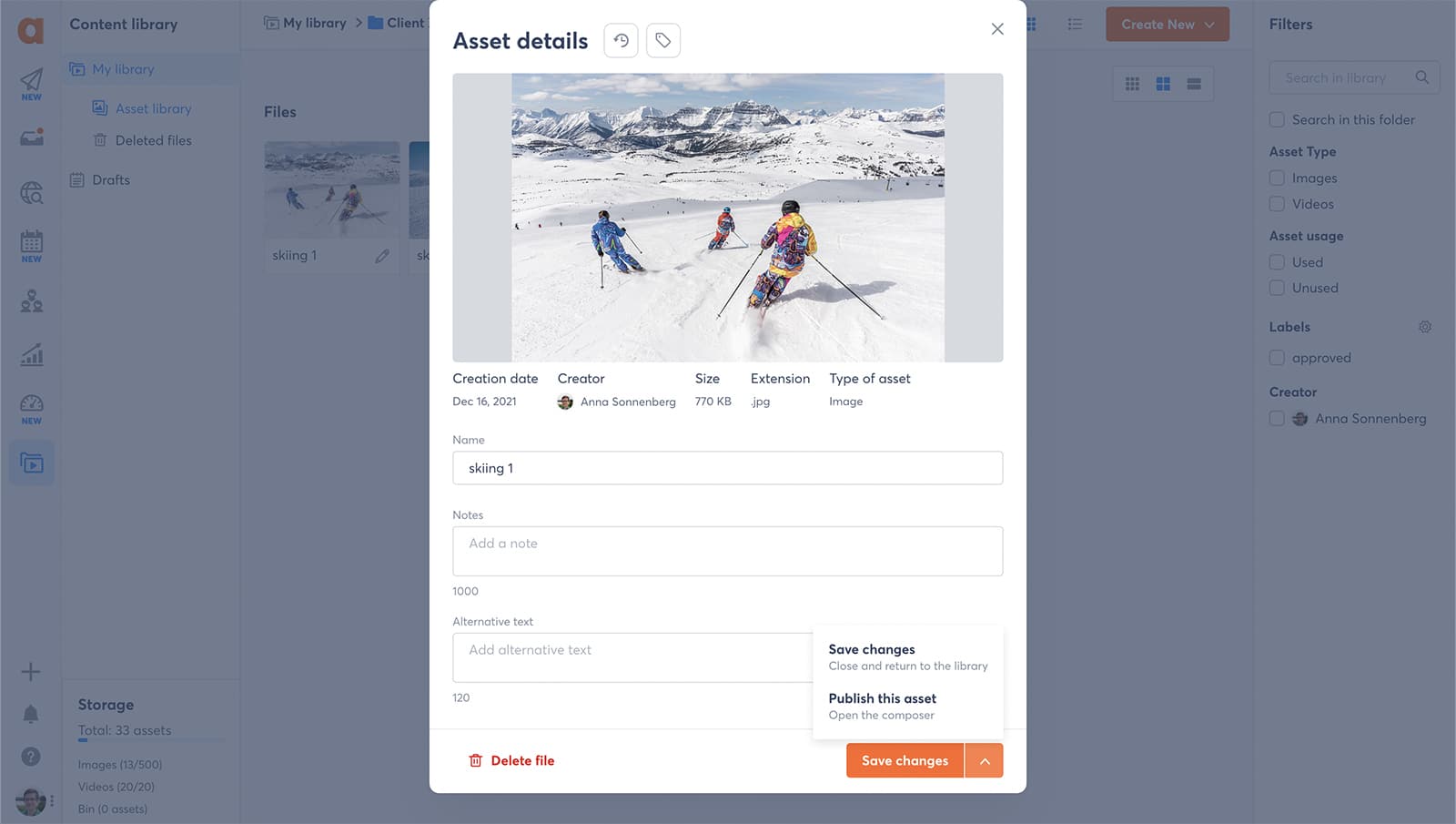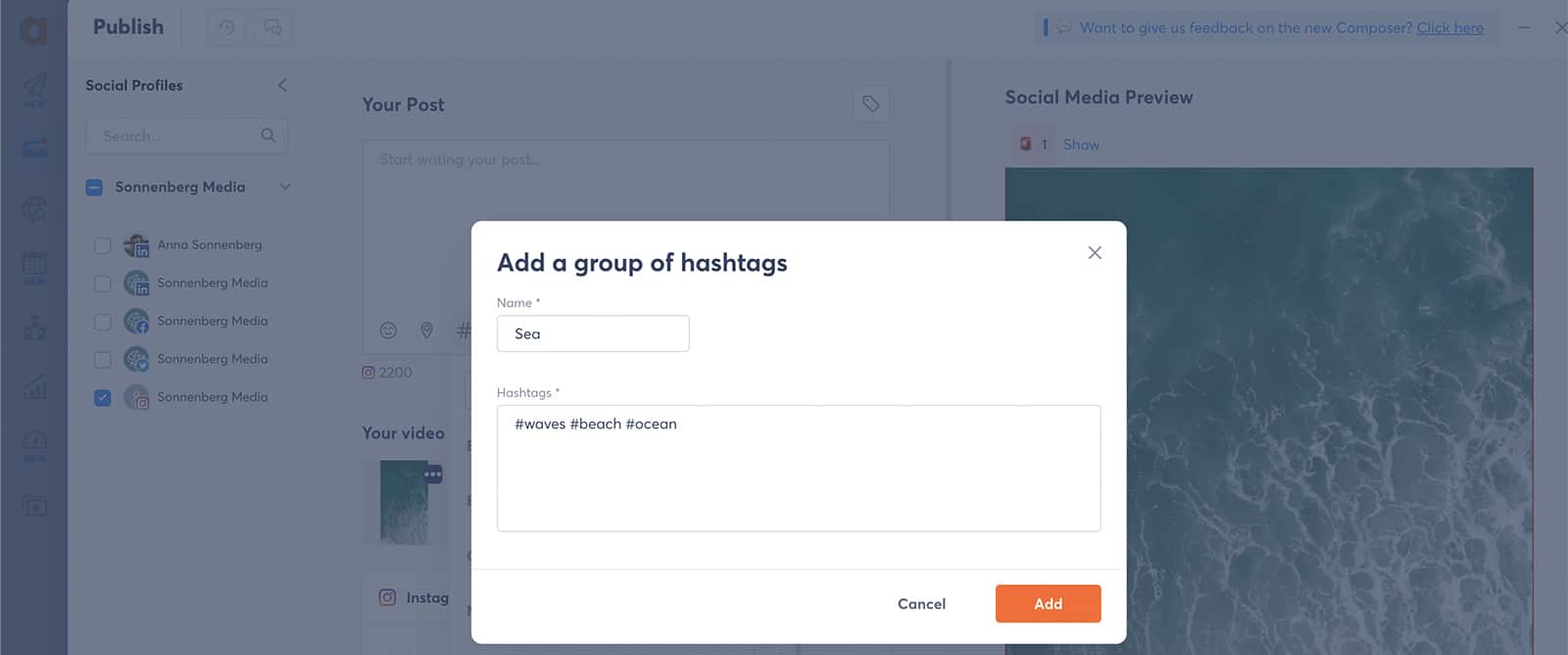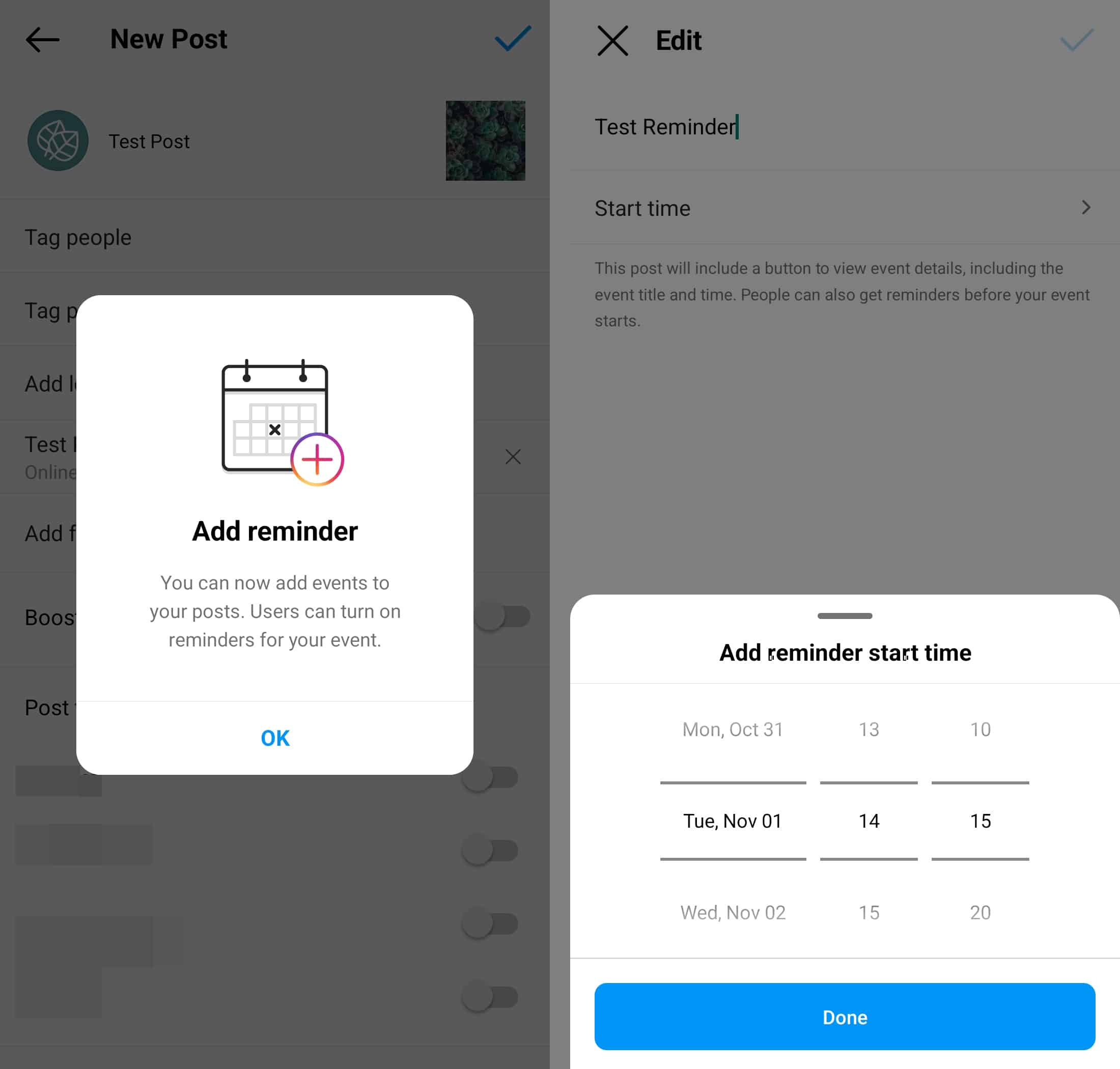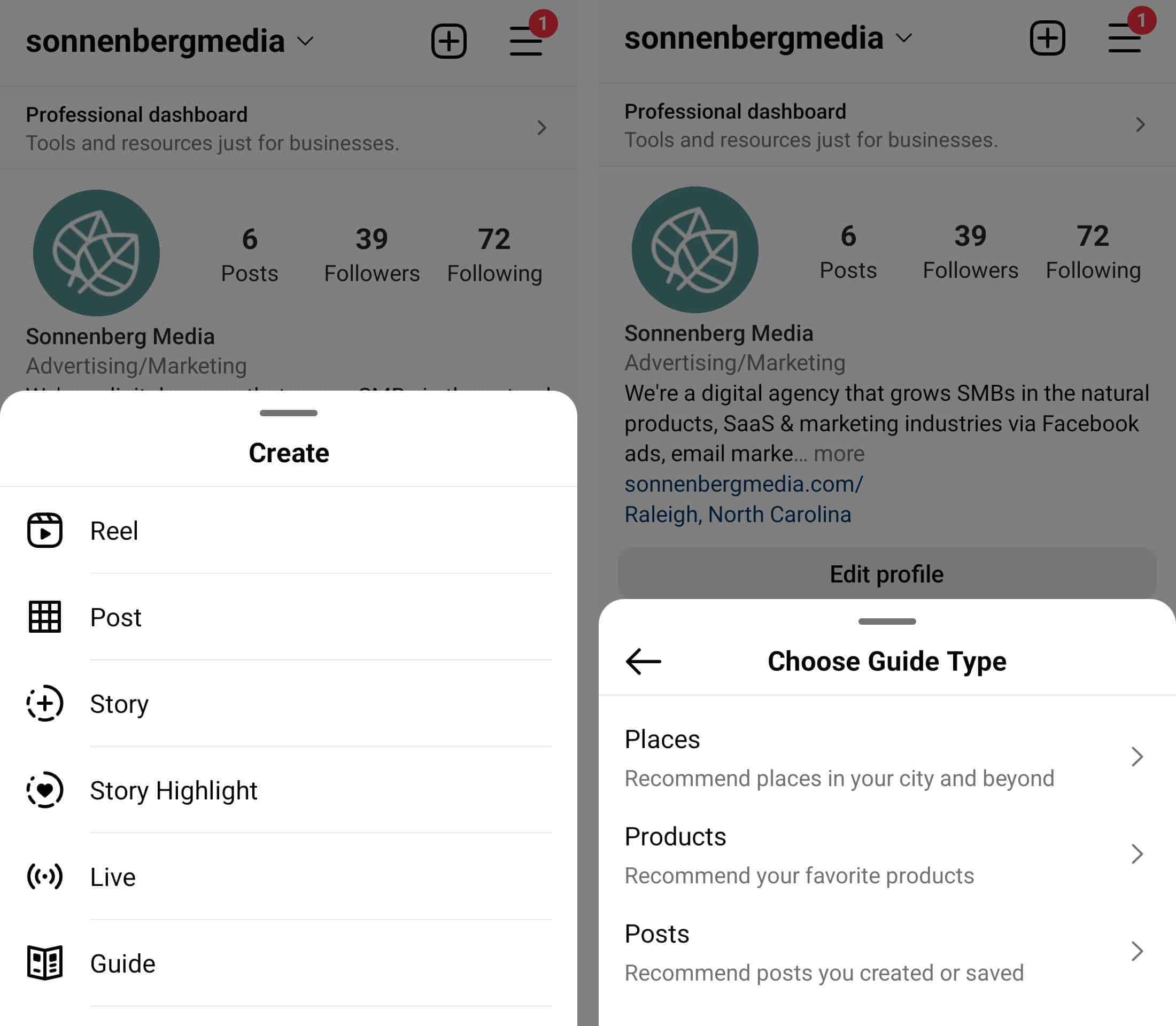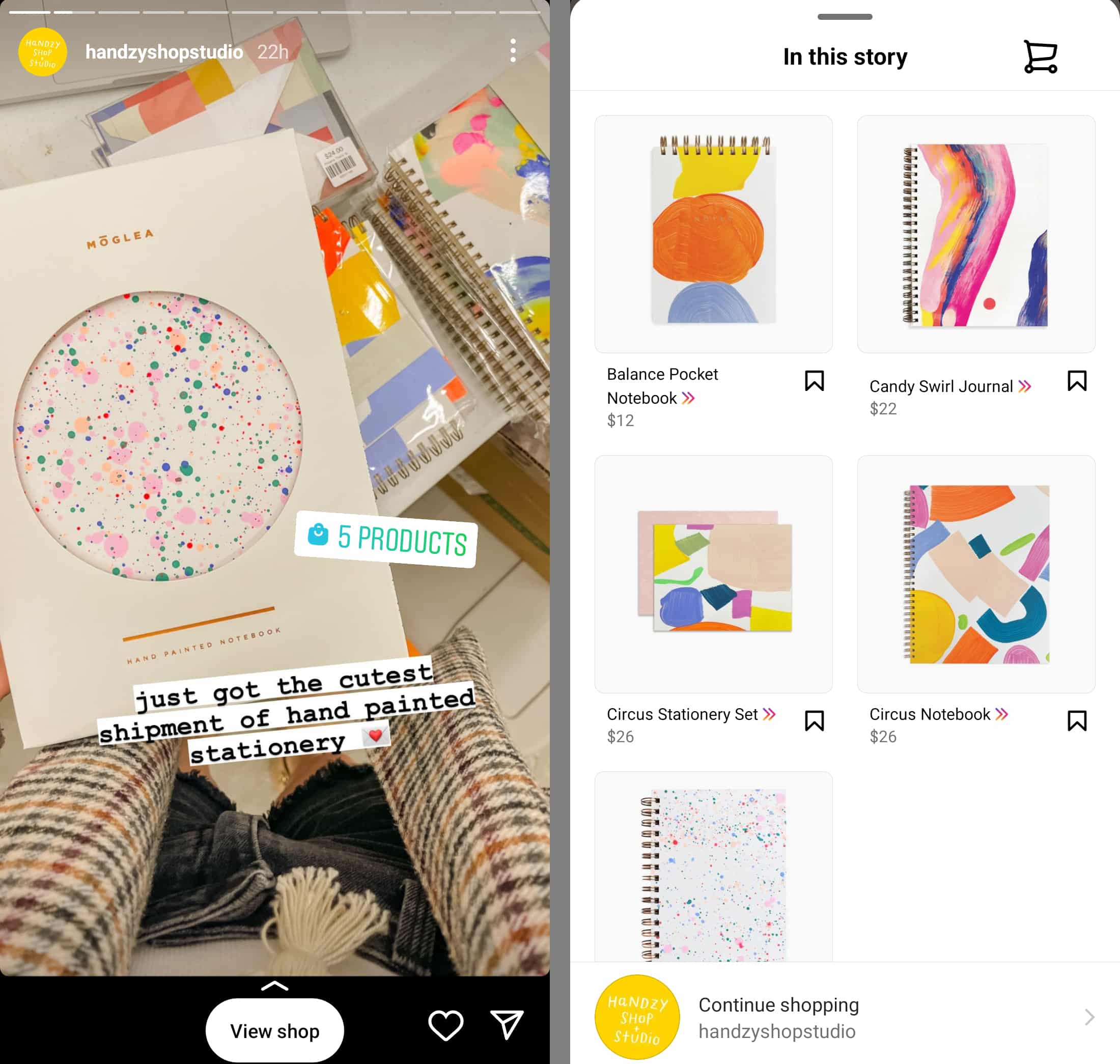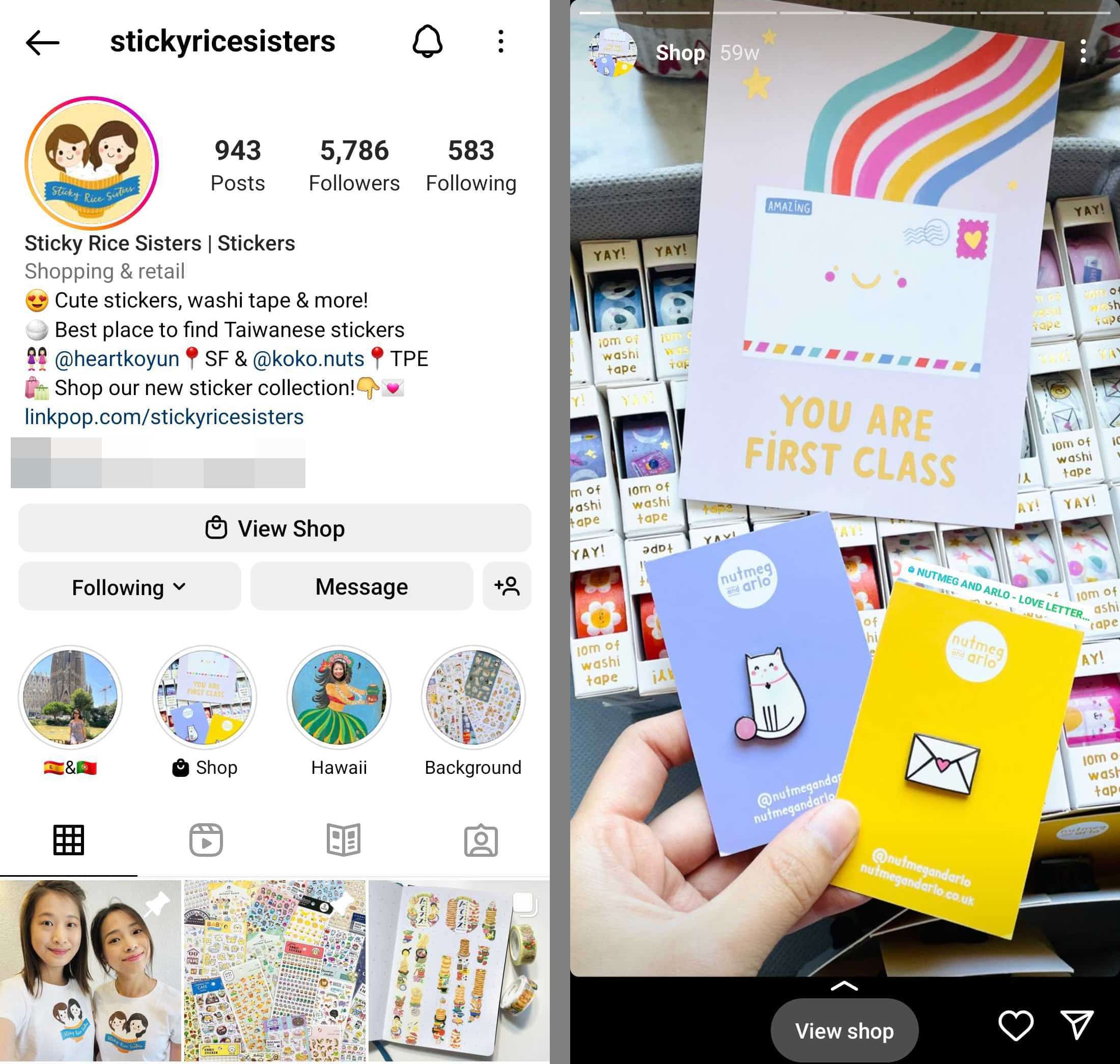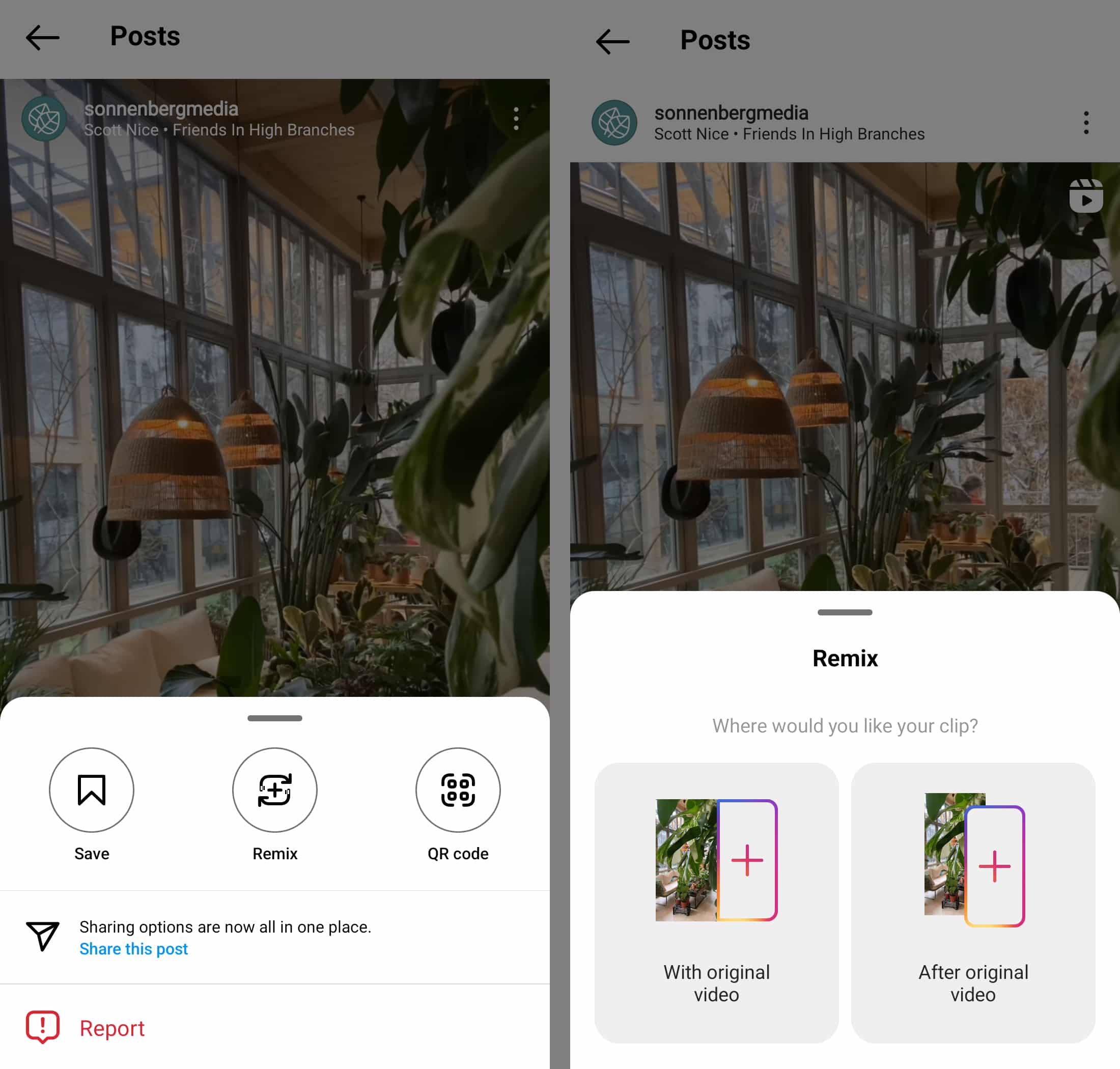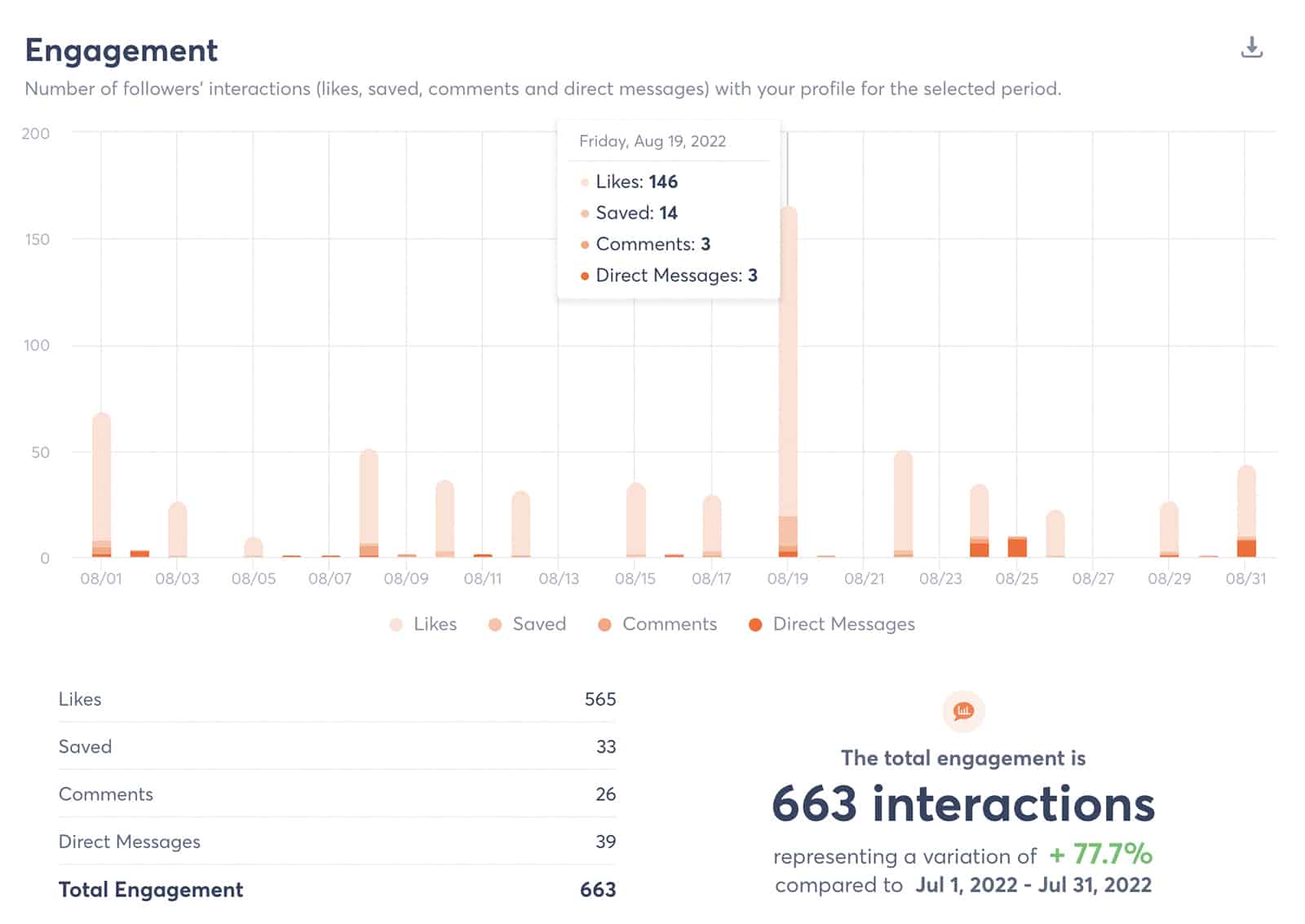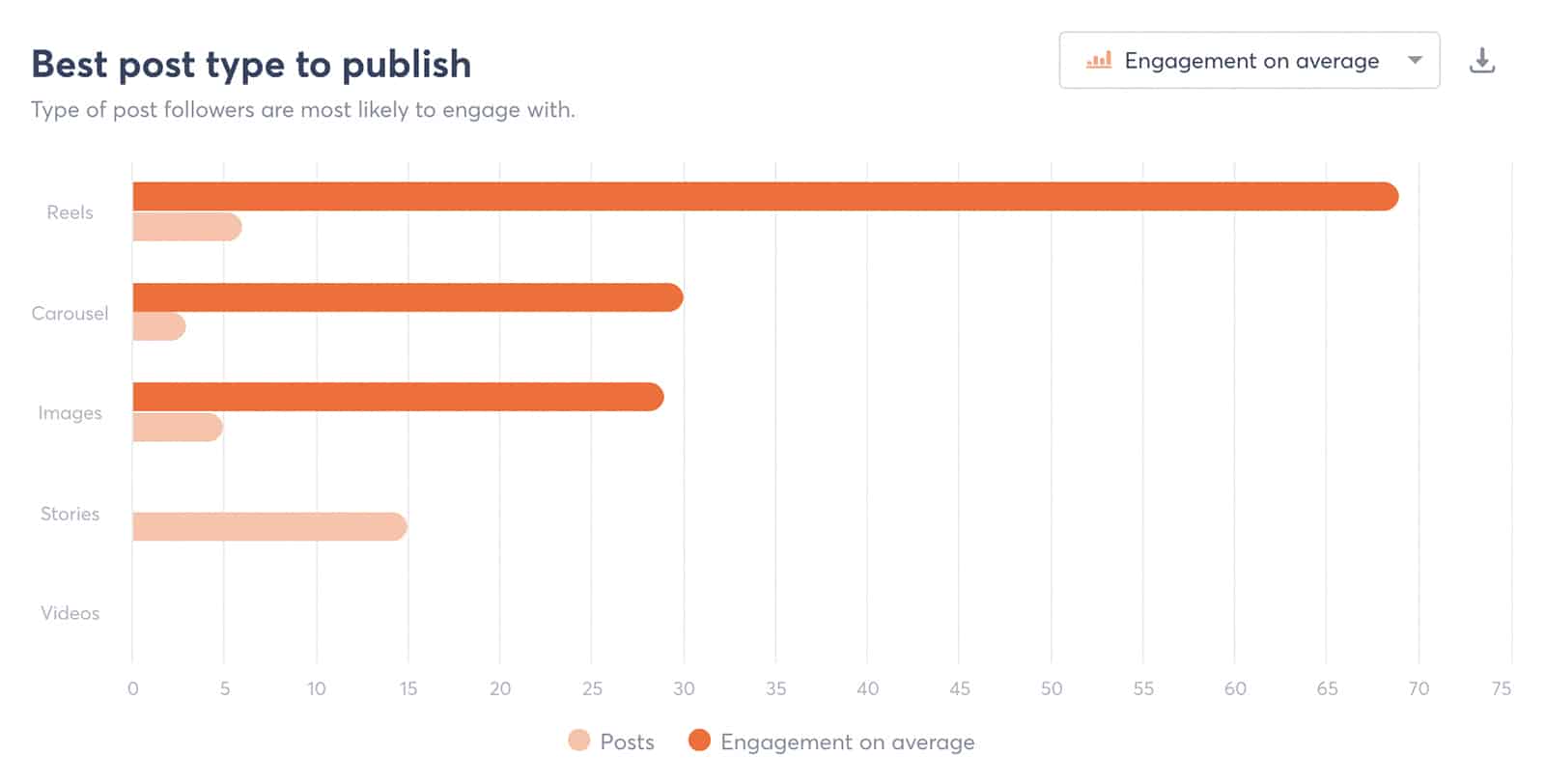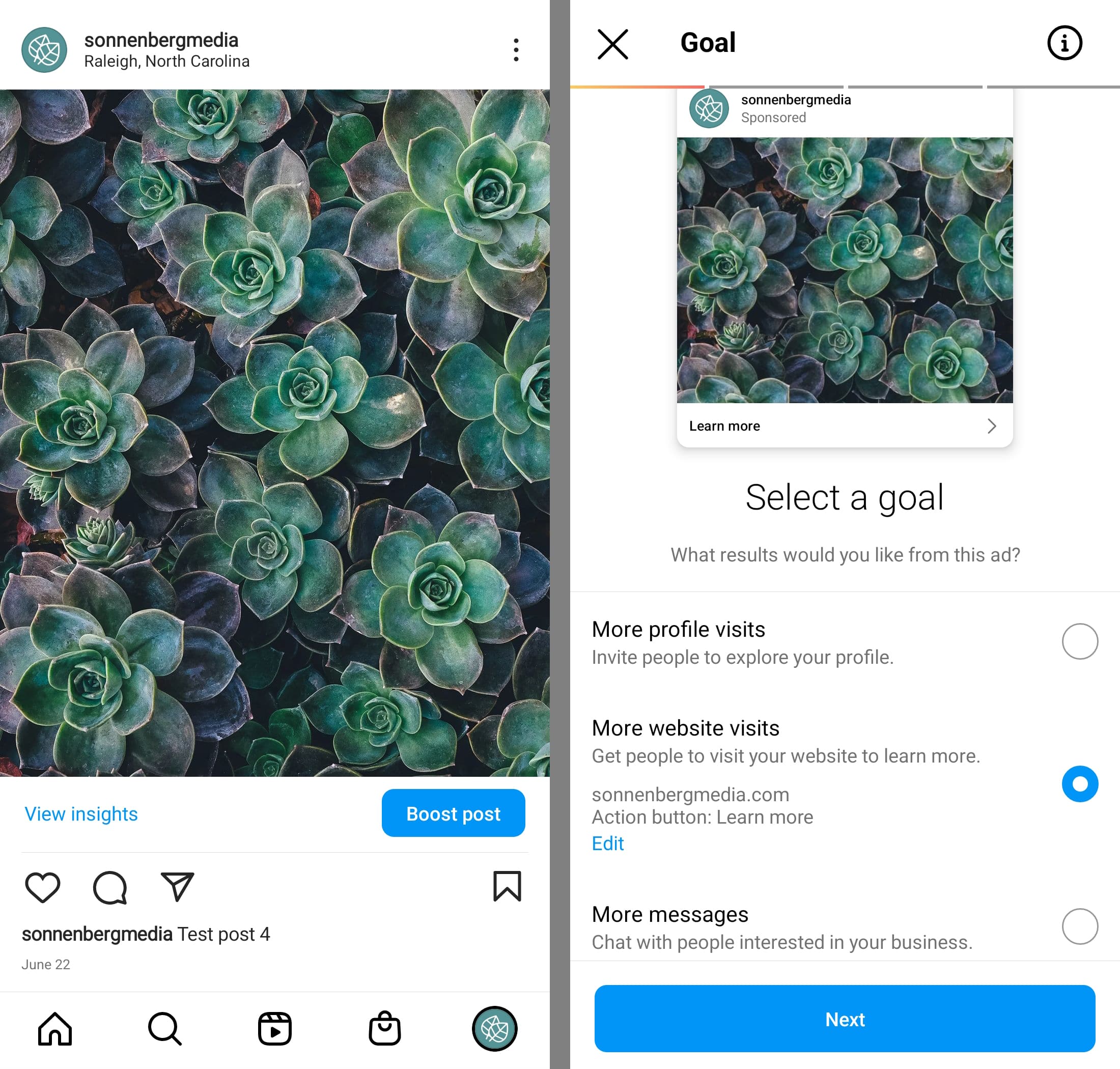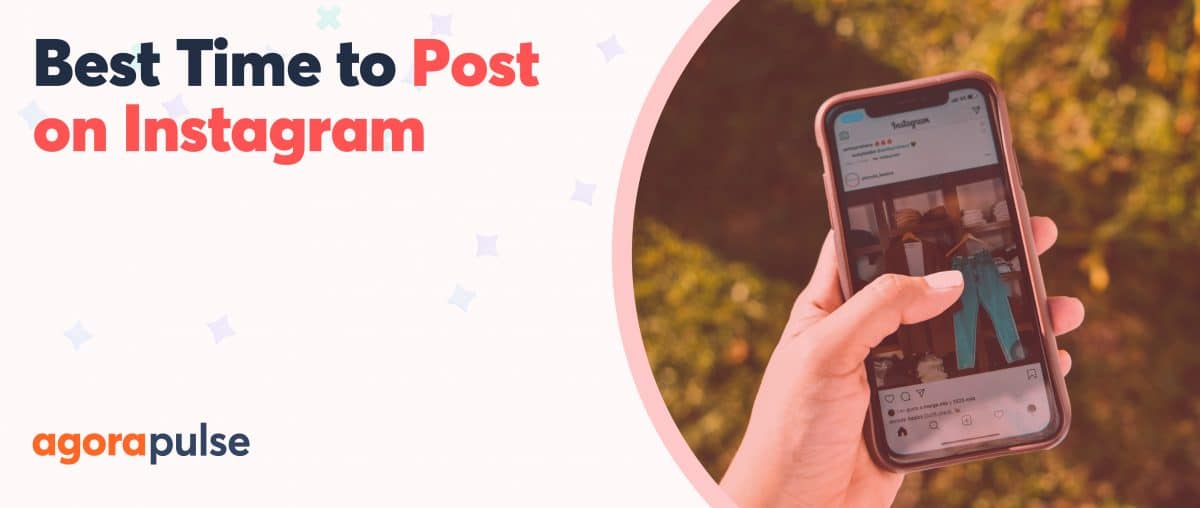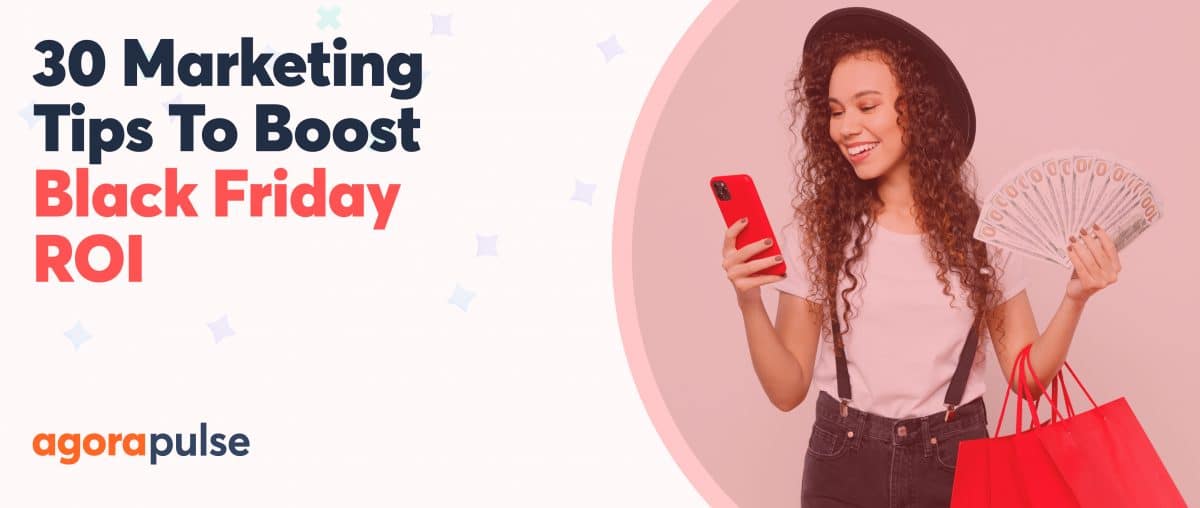Instagram can be one of the most powerful tools for selling products and services—if you know how to stand out from the crowd. These tips will show you how to sell on Instagram successfully.
Did you know that as of this writing, Instagram has over one billion active monthly users? Yes, billion. Instagram now is a global marketplace, and in the U.S. alone, 37% of adults use Instagram.
Because Instagram is a visual platform, it is a perfect place for companies that sell products to show off what they have to offer.
Yes, using Instagram to help your customers remember who you are as a brand or a social media agency (and why they love you or your clients) is a critical part of your Instagram marketing. But if you stop there, you are missing a big opportunity to up your sales!
Good news: You have multiple ways to set up shop and start selling on Instagram. (Even better news: You can start Agorapulse for free today and manage your Instagram like a pro.)
Set Up Instagram Shopping Natively
The best place to start is Instagram Shopping if you qualify.
With an Instagram Shop, you get a prominent Shop on your profile and the ability to tag products in a variety of content.
For example, customers can tap the Shop button on the @mantelpdx Instagram bio as pictured below. From there, they can easily browse, save, and buy items from the brand’s e-commerce store.
To highlight items in their Instagram content, @mantelpdx can tag products in posts, stories, and reels. As you can see above, some posts in the brand’s Instagram grid feature product tags (see the icons in the upper right corners).
Before you make plans to set up an Instagram Shop, make sure your business or client is eligible.
To be able to use this feature, you need to meet the Commerce Eligibility Requirements, including:
- Comply with all Terms of Service, Community Standards, Commercial Terms, and Community Guidelines.
- Represent your business and domain. (Must have your product listings linked and available on your page.) Your domain may be required to undergo verification.
- Be in a supported location (not only your office hub but your physical location as a social media manager). Make sure your location is on their approved list.
- Sell physical goods. (Sorry, services are not supported at this time—but you have other options for selling digital items and services.)
- Demonstrate trustworthiness and provide accurate information.
- Follow brand best practices.
- Have an Instagram business account (rather than a personal account).
- Link your Instagram account to your Facebook page.
If you meet those requirements, you’ll be able to set up an Instagram shop!
Setting Up Shop
Ready to set up your shop?
- Open the Instagram app and navigate to your profile.
- Tap to open the menu in the upper right corner and select Settings.
- Tap Business and then tap the Set Up Instagram Shopping link at the bottom of the screen.
Set Up Instagram Shopping with Facebook Catalog Manager
You will now need to connect your Instagram account to an existing catalog or create a new one.
The first possible way to do this is with Facebook Commerce Manager.
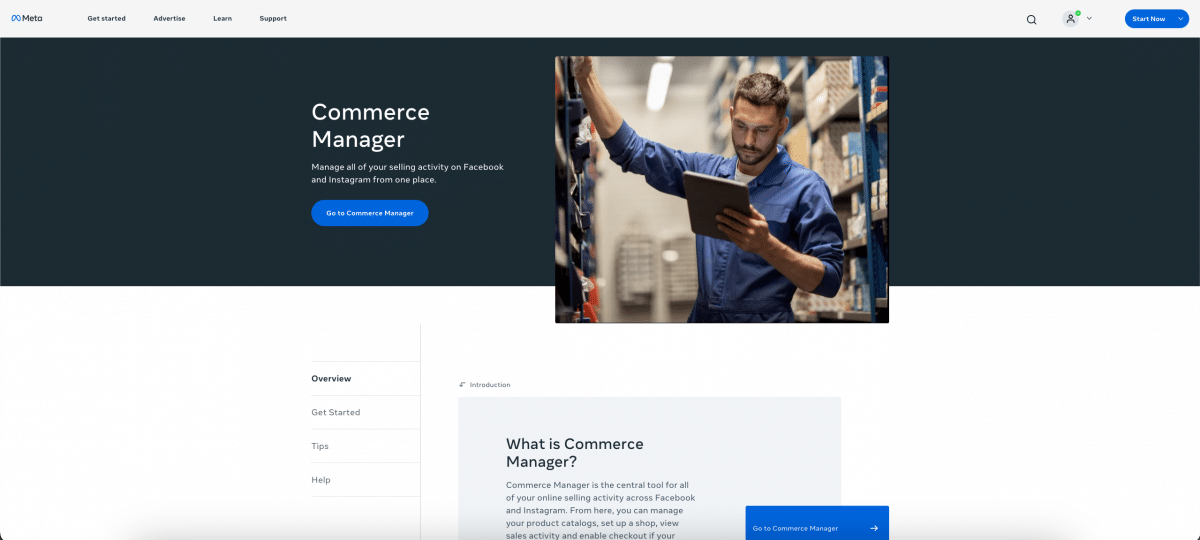
Getting started with Facebook Commerce Manager
First, click the blue Create a Shop button, and choose a payment method. By default, Commerce Manager opts new catalogs into Meta’s built-in checkout system. If you use this option, customers can make purchases from your shop without leaving Instagram.
Although this option minimizes friction during checkout, it isn’t the right method for every retailer. You also have the option to send shoppers to an external site (like your e-commerce site) to complete checkout or to make payments in DMs.
Then choose your sales channels. You can set up linked shops on Facebook and Instagram, or you can focus on Instagram only.
Next, add a catalog to your Instagram Shop. If you’ve already set up a catalog for advertising, you can opt to link it. Otherwise, create a new catalog.
Then choose how to upload your inventory. If you have a relatively small catalog, uploading items manually may be the simplest way to accomplish this task.
If you add images, they need to be 500×500 pixels.
You will also need to add:
- A description of your product
- SKU number if you are using them internally
- The link to the direct page on your website where people can purchase
- Product price
You also have to input your company’s website and a shipping and return policy into Commerce Manager before you can launch your Instagram Shop.
Related Read: How to Write Instagram Captions That Convert
Set Up Instagram Shopping with Shopify or Big Commerce
Do you already use Shopify or BigCommerce for your online sales experience on your website? Then this whole process will be much easier for you, as you can connect your sales platform directly.
When creating a catalog, choose the option to connect a partner platform. Then choose the third-party platform you use for e-commerce. Follow the prompts to complete your catalog setup and upload your inventory.
Whichever method you use (Commerce Manager, Shopify, or Big Commerce), after you get everything connected you will be able to start making shoppable posts.
Sell Products via Instagram DMs
If you set up an Instagram Shop using the steps above, you can choose DMs as a checkout option. But you don’t necessarily need an Instagram Shop to take orders and accept payments in DMs. Instagram allows eligible small businesses to sell products via chat—no Shop necessary.
You can set up this tool directly from your DMs. Open a DM and tap the Create and manage orders option. Then follow the prompts to set up payments via chat and prepare to take your first order via DMs.
Use an Alternative Sales Platform
You may have other reasons for wanting to use something other than shoppable Instagram posts or other native Instagram tools.
- Are you selling outside an area supported by Instagram?
- Your main product is selling services?
- Do you want to try something different?
- Is your client just getting started and doesn’t want the time and effort of setting up a catalog?
You might consider using a third-party tool that makes your Instagram grid shoppable. For example, Like2Buy essentially duplicates your Instagram grid and lets you add links to all your feed posts. You can link out to specific products, complete collections, or even blog posts.
For example, @rei links to a Like2Buy landing page in the brand’s Instagram bio. On this mini site, Instagram users can tap any item in the grid to go directly to the linked content—including product collections, e-commerce items, and blog posts.
Another alternative is to use a paid service like CommentSold. This service works by letting people buy directly from comments on Instagram (as well as Facebook.) Plans range from $49/month on up, and you will also need to pay up to a 5% transaction fee.
If you can’t use Instagram’s native options, the following options may work for you.
Link Out to Your E-commerce Website
Setting up an Instagram Shop and using a third-party e-commerce tool are the most straightforward ways to simplify shopping on Instagram. But what if you aren’t eligible for Instagram Shops and you don’t have a budget for a third-party tool?
You can always link out to an e-commerce website from Instagram. Using external links may not create a seamless shopping experience, but this option can still get shoppers to visit your website and purchase your products and services.
In your Instagram bio, you can simply add the URL for your e-commerce shop. If you want to make your online shop easier for Instagram users to navigate, you can link to a third-party tool like Linktree. With Linktree, you can create a mobile-friendly mini site with unlimited external links that have labels or calls-to-action (CTA) for your Instagram audience.
What to Do When Selling on Instagram
With these tips, your team can sell more effectively, whether you’re using Instagram Shopping or a third-party tool.
1. Publish Instagram reels
When you want to maximize sales on Instagram, it’s essential to create the type of content that performs best on the platform. Instagram announced a shift from photo to short-form video in late 2021. Since then, the platform has gradually consolidated its video content around reels. That means reels should be at the top of your content creation to-do list.
From product videos to styling suggestions to how-to content, you have tons of options for highlighting your products in Instagram Reels. For best results, don’t include a hard sell in every reel you publish. Instead, take an entertaining or educational approach to some videos so your audience can engage with and learn from the content.
Don’t want to create and publish your reels in the moment? You can easily create and schedule them in advance. Agorapulse can publish reels directly to save you tons of time. Alternatively, you can opt to get a mobile notification when it’s time to publish. Then you can add product tags that point to your shop.
2. Create compelling feed posts
Just because Instagram has shifted toward video doesn’t mean image posts are no longer a good idea. Images can still be incredibly effective for showcasing your products in lifestyle content. Since you can easily add product tags to image posts, they make it super-easy for your customers to browse and buy.
Don’t want to post a single image? You can schedule carousel posts with up to 10 images from your Agorapulse dashboard. Upload all your images, drag and drop to get the order just right, and add a caption. Then schedule the post to go live at the ideal time for your audience. You can edit posts to add product tags at any time.

3. Generate buzz with Instagram stories
If your brand has an engaged Instagram following, there’s a good chance you also have a lot of story viewers. Whether you want to share behind-the-scenes content or promote a limited-time sale, stories should be an important part of your brand’s Instagram content plan.
Like posts and reels, stories also support product tags. You can add up to five product tags per story so customers can shop instantly. Instagram stories also support link stickers so you can easily link out to your company’s website or to a shoppable landing page.
Agorapulse also supports story creation and scheduling. Upload your story creative to Agorapulse and choose the time you want to publish. At the designated time, you’ll receive a notification on your mobile device so you can complete the publishing process.
4. Get creative with Canva designs
If your team has great photography skills, then your feed content may not need much editing beyond cropping for Instagram. But when you publish a lot of reels and stories, creative framing, transitions, and effects are critical.
With Agorapulse’s Canva integration, you can easily design and publish from the same platform. From your Agorapulse dashboard, create a new Instagram post. When you click the camera icon, choose Design with Canva to open your account in the same window. You can use your choice of Canva templates to add product details or highlight special offers.
Finish designing your video or graphic and click the Publish button in Canva. It automatically uploads your design to an Agorapulse—all you have to do is add a caption and choose a time to publish. Want to create a bunch of content in advance? Use the tips below to use Canva with Agorapulse’s asset library.
5. Organize content with an asset library
Whether your team is managing Instagram content for clients or for your own brand, an asset library makes the process much easier. Agorapulse’s asset library allows multiple levels of sub-folders so you can separate content by client, platform, campaign, sale, or any other element that matters to your team.
You can upload approved or draft assets directly to the library. The asset library also integrates directly with Canva so you can quickly add all your designs to Agorapulse and save time on publishing.
To find assets easily, Agorapulse lets you sort by creator name, content type, title, and other factors. When you’re ready to post an asset, you can click to publish directly from the asset library—or you can add it to an Instagram post in the publishing composer.
6. Use hashtags to improve discovery
When you want to get the word out about a product launch or a special offer, hashtags can help. You can use Instagram to research relevant hashtags. Once you start adding them to your content, you can use Agorapulse’s hashtag report to find the ones that work best for your brand.
Then you can streamline content creation by adding hashtag groups to Agorapulse. Click the hashtag symbol at the bottom of the publishing composer to create new hashtag groups or reuse part or all of existing groups.
7. Remind followers about product launches
Want to promote time-sensitive sales or product launches? Instagram’s reminder tool makes it easier to notify customers about events like the start of a sale or the launch of a product. When followers opt in, Instagram automatically notifies them at the time you set.
You can add a reminder to any feed post before publishing. Give the reminder a descriptive title, add a start time, and add a CTA in your caption, encouraging customers to opt in.
8. Pin great content to your Instagram grid
If you publish Instagram content frequently, your best posts and reels might not stay at the top of your grid for long. To ensure that customers can easily find information on seasonal specials or new products, you can pin relevant content to your grid.
Open your Instagram profile and select any post or reel in your feed. From the menu, select the option to pin the item to your profile. You can pin up to three posts, and they’ll stay at the top of your grid until you remove them manually.
9. Develop product guides
Do you want to help customers decide which product to purchase for certain needs or goals? With Instagram guides, you can recommend products for different uses while creating direct links to your Instagram shop.
To build a new guide, open your Instagram profile and tap the plus button. Select Guide from the menu and choose Products from the list of guide types. Then add all the products you want to recommend and write short captions for added context.
10. Share shoppable content to stories
If your stories tend to get a lot of engagement, leverage additional ways to promote your brand and drive sales in this space. In addition to creating unique stories, you can share your best feed posts and reels to stories. For example, @handzyshopstudio tagged several products in the story below.
To share to stories, open any feed post or reel and tap the paper plane icon. Select Add reel to your story or Add post to your story. To make your story stand out in the feed, add extra elements like interactive stickers or animated GIFs.
11. Add reviews and user-generated content to stories
Sometimes customers’ words and content can persuade new customers to buy much more effectively than your own branded content can. If your customers tag your brand in reviews or user-generated content (UGC), you can easily share it to stories.
You can use the same workflow as above to share any public account’s content to your story. Just tap the paper plane icon and opt to add the content to your story.
12. Save great content to story highlights
Stories automatically disappear after 24 hours, but you can make your best content last longer. Open any active story and tap the Highlight button to pin a highlight to your Instagram profile. You can also create highlights from your story archives.
Consider organizing your highlights to showcase shoppable items. For example, @stickyricesisters has a story dedicated to shop updates and shoppable items.
13. Encourage customers to tag your products
If your customers create a lot of great content featuring your brand, you can encourage them to tag your products. Instagram Shops automatically allow other accounts to tag products—so any brand ambassador or customer can make their content shoppable.
When creating Instagram content, users can choose the option to add a product tag. Then they can search for your shop, browse your products, and tag relevant options.
14. Prompt customers to remix your content
Happy customers can also offer their own take on your Instagram content, as long as you have Instagram’s remix option enabled. Go into your account settings, tap Privacy, and then select >Reels and Remix. You can enable remix for both reels and photos.
Then customers can create new posts or reels that repurpose your original content. For example, their remixes might show how they styled your product, how they prepared your ingredients, or how they restocked their empty fridge with your product.
15. Partner with creators and influencers
In addition to encouraging customers to highlight your content, you can create official partnerships with influencers, creators, or brand ambassadors. Then you can brainstorm influencer marketing campaigns that showcase the products you want to promote.
If you pay influencers or provide them with free product, make sure to use Instagram’s paid partnership tool. Influencers can easily add a paid partnership label to their content to make their relationship with your brand transparent.
16. Use analytics to find what works
As you create Instagram content, monitor your results closely. Whether you publish via Agorapulse or directly in the app, you can use Agorapulse analytics to track reach and engagement.
Check the engagement report to quickly identify days when your content generated a ton of likes, comments, or shares. Then use the content report to see your top-performing posts and reels. You can also use the content type report to see whether photos or reels have worked best for your audience—and then create more of what resonates.
17. Advertise on Instagram
Do you want to increase the results you get from organic Instagram content? You can easily boost Instagram posts and reels from the mobile app. Tap the Boost post button under any post or tap the Boost reel button from any reel menu. Then choose a goal, build an audience, and decide on a budget.
If you want to create a more complex campaign, use Ads Manager instead. There, you can set up campaigns with objectives throughout the funnel. You have the option to use existing posts as a creative or to create new content to use with your paid posts.
18. Keep your Instagram sales in context of your larger sales funnel
You don’t want your Instagram sale to be a secret, do you? Not at all! Cross-promote your Instagram sale whenever possible. If you’re on Facebook, Twitter, or Tumblr, let your followers know.
Give a heads up to your email list, especially a segment most apt to use Instagram. Not only will you increase your chances of getting people to participate in your promotion, but you might also get more Instagram followers as a result!
Also, think about how your shoppable posts are connected to your other marketing efforts. For example, you might suggest that clients offer discount codes to website visitors who arrive from Instagram. Then your clients can sell to interested customers on multiple channels.
Download a FREE guide on how to sell on Instagram.
Wrapping Up What We’ve Learned About How to Sell on Instagram
Now that you know how to sell on Instagram, you have all the tools you need to help your team or your clients set up their shops, promote their products, and monitor their results. Connecting the dots like this can help you not only make one-time sales but also help build long-term relationships with new customers.
Check out our free trial of Agorapulse to help you schedule, track, and measure all your social media efforts.
